Personal Protective Equipment
The Occupational Safety and Health Administration (OSHA) and the University’s Chemical Hygiene Plan require the use of personal protective equipment (PPE) to reduce employee exposure to laboratory hazards. PPE must be readily available and provided at no cost to the employee. Minimum PPE requirements in every laboratory consist of a lab coat, long pants, fully enclosed shoe, safety glasses and gloves. It is the responsibility of the laboratory Principal Investigator to provide high quality PPE to their employees and to ensure that all laboratory staff have received training on the selection and use of PPE.
- When PPE must be worn
- What PPE is necessary to carry out a procedure or experiment
- How to properly put on, take off, adjust, and wear PPE
- The proper cleaning, care, maintenance, useful life, limitations, and disposal of the PPE
For more information, please review chapter five of the Laboratory Safety Manual, “Protective Clothing and Equipment.”
Nomex
Highly fire-resistant because the fabric thickens, carbonizes and remains intact under fire conditions. Used widely in occupations where fire is a real hazard and can be laundered without losing fire-resistant properties.
Fire-Resistant Cotton
Cotton coats are available that are treated with a fire-resistant material. Fire-resistance may dissipate after repeated laundering.
100% Cotton
Superior to synthetic blends for fire-resistance, but inferior to Nomex and fire-resistant cotton.
Synthetic/Cotton Blends
100% polyester coats, or cotton/polyester blends are the most combustible and are not considered appropriate for working with flammables.
Laboratory gloves have a shelf life stamped on the box. Dispose of gloves if they are old. You can dispose of gloves in the regular trash if they are not contaminated with bloodborne pathogens, radionuclides, highly toxic chemicals or select carcinogens. Always store gloves away from windows, transilluminators and other ultraviolet sources since some glove materials are susceptible to ultraviolet damage.
| Glove Material | Intended Use | Example |
|---|---|---|
| Natural Rubber Latex |
|
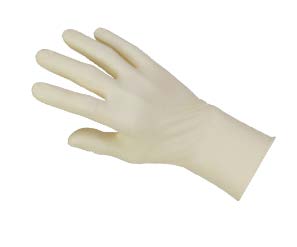 |
| Butyl |
|
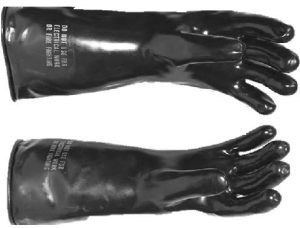 |
| Neoprene |
|
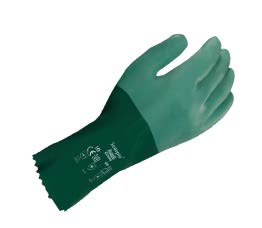 |
| Nitrile |
|
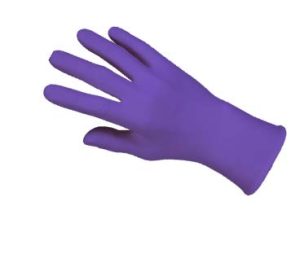 |
| Poly (vinyl alcohol) |
|
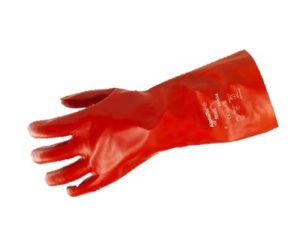 |
| Poly (vinyl chloride) |
|
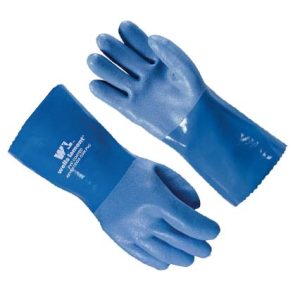 |
| Polyurethane |
|
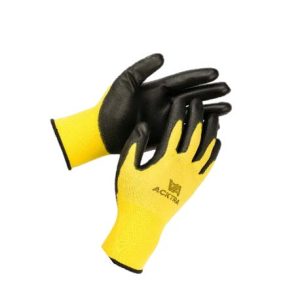 |
| 4H® / Silvershield® |
|
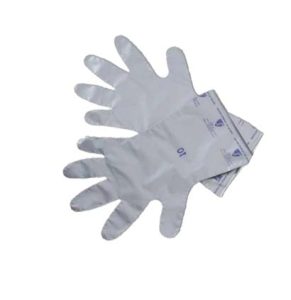 |
| Viton® |
|
 |
| Cryogenic Material / Thermal Fabric |
|
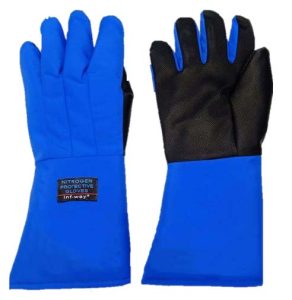 |
| All Cotton Terry Cloth |
|
 |
| Kevlar® / Nomex® |
|
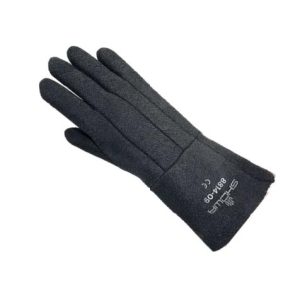 |
Resources/Suppliers
However, the University strongly encourages the use of hearing protection around noisy equipment. A good rule to follow is, if you think you might need hearing protection, wear hearing protection. In general, hearing protection is required when occupational exposure is above 85 decibels. For more information, refer to the Occupational Noise Exposure page.
Employees required to wear safety shoes can receive a subsidy for one pair of shoes per year. Contact your department if you have questions about whether your job duties require safety shoes and your eligibility for this subsidy. Contact Environment, Health and Safety for further questions about foot protection.
Laboratory personnel are required to wear eye protection during any experiment or laboratory procedure, regardless of anticipated eye hazards. The type of eye protection required depends on the nature of the hazard and how frequently the hazard is encountered. Refer to the table below or chapter five of the Laboratory Safety Manual, “Protective Clothing and Equipment,” for more information.
The University is committed to a policy of providing eye and face protection devices without cost to students, employees and visitors. Each department is responsible for funding its eye and face protection program. Prescription safety glasses can be provided to employees at no cost. For information about prescription safety glasses, please contact EHS or your department representative.
| Type of Eyewear | Description | Example |
|---|---|---|
| Goggles |
|
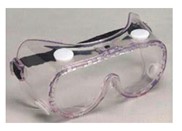 |
| Safety Glasses (with Side Shields) |
|
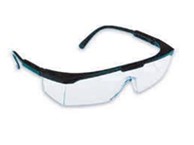 |
| Face Shields |
|
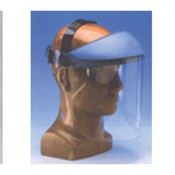 |
| Prescription Eyewear |
|
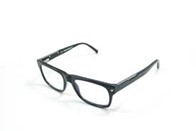 |
Respiratory protection may be necessary when working with certain chemicals, biological hazards or dusts known to cause respiratory illness. In all cases, respiratory protection is a last line of defense to be used after engineering controls (e.g. ventilation) and work practice controls (e.g. product substitution) are exhausted.
There are two types of respiratory protection: face masks and respirators. Face masks include cloth masks, surgical masks and single-strap comfort masks. These are not regulated by OSHA. In contrast, respirator use is regulated by OSHA and requires training, fit testing and medical evaluation. Respirators should not be worn ”casually” in the lab. For more information, refer to the Laboratory Safety Manual or the Respiratory Protection Program page.
| Type of Respiratory Protection | Description | Example |
|---|---|---|
| Surgical/Cloth Mask |
|
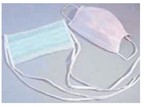 |
| Comfort Mask with Single Strap |
|
 |
| N95 with Two Straps |
|
 |
| Powered Air-Purifying Respirator (PAPR) |
|
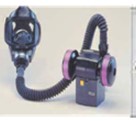 |
| Half-face Air-Purifying Respirator (APR) |
|
 |
| Full-face APR |
|
 |
| Supplied-Air Respirator |
|
 |
| Self-Contained Breathing Apparatus (SCBA) |
|
 |
- Protective Clothing and Equipment
- Laboratory PPE fact sheet
- OSHA Guidance on Personal Protective Equipment
- Experimenting With Danger: Chemical Safety Board video on laboratory safety (YouTube)
Associated Departments:
